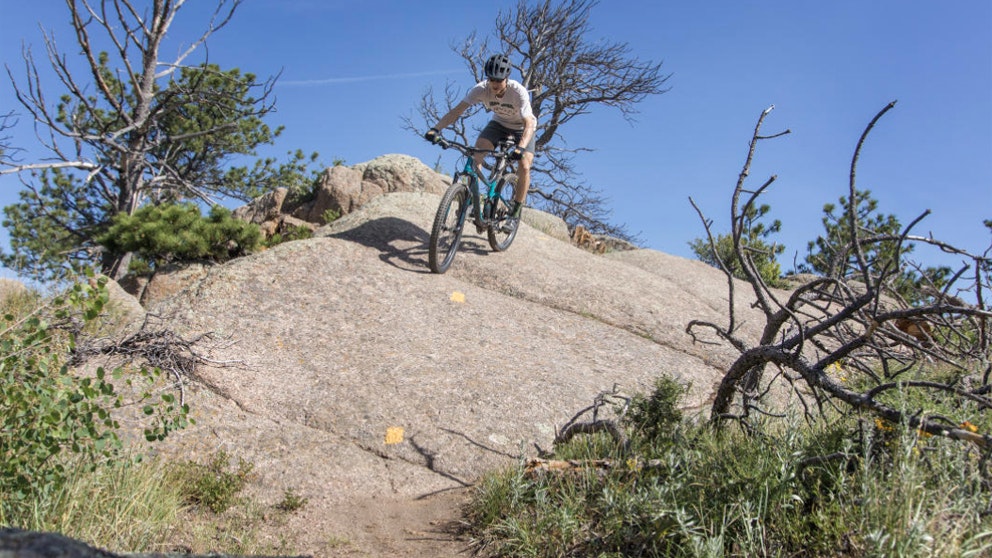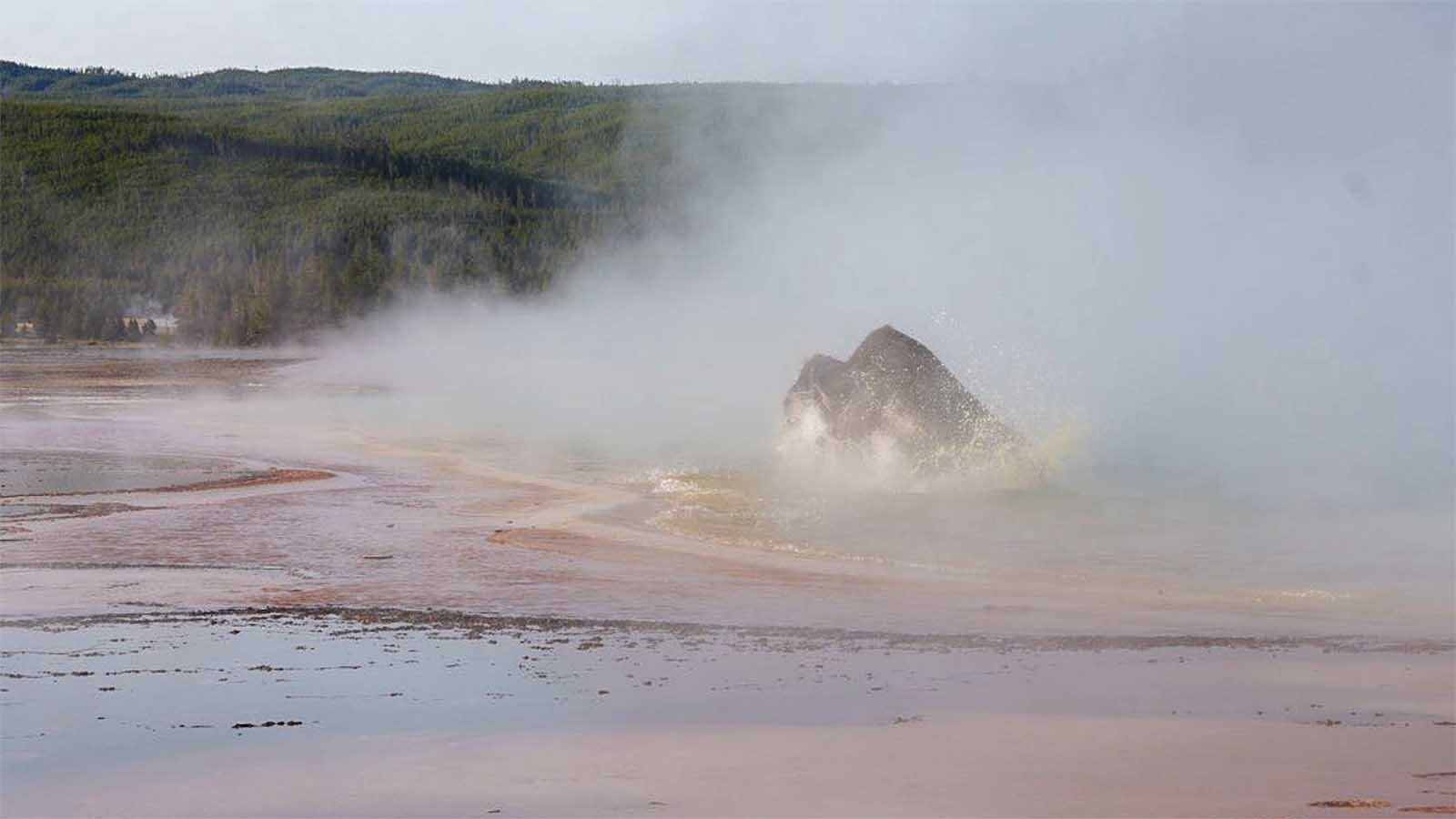The e-bike wave is washing over Wyoming’s outdoors scene, regardless of whether current regular users and land managers are ready for it, some cyclists say.
And Curt Gowdy State Park in particular has become popular with Colorado crowds, said Laramie mountain biker Evan O’Toole.
“I tend to avoid Curt Gowdy during the busy times now,” he said about the crowding that’s come with the popularity of electric-powered bikes.
Curt Gowdy is between Laramie and Cheyenne and has long been known for its extensive network of mountain bike trails. It’s also one of the few places in southeast Wyoming where e-bikes are allowed. That’s because Wyoming State Park regulations allow some e-bikes, but U.S. Forest Service regulations on national forest lands don’t.
“If you go on a Saturday or a Sunday, the campgrounds are full,” O’Toole said. “And a lot of it is people who are coming up from the Front Range because they’ve discovered those trails.”
Different Regulations
E-bikes come in three classes and two basic types. Class I and class III bikes are pedal assist. That means their electric motors boost riders’ pedaling power. Class I e-bikes go up to roughly 20 mph. Class III pedal-assist e-bikes can go up to 28 mph.
Class II e-bikes are throttle control. That means throttle-controlled electric motors can propel those bikes them up to about 28 mph, regardless of whether the riders are pedaling.
The Forest Service considers all types of e-bikes to be “motorized vehicles” and doesn’t allow them on nonmotorized trials.
State parks such as Curt Gowdy allow pedal assist, but not throttle-control e-bikes.
The Pilot Hill Recreation Area just east of Laramie is growing in popularity, with locals and others from the surrounding region, said Sarah Brown Mathews, executive director for Pilot Hill Inc., which manages the area.
E-bikes of any type aren’t allowed there, she said. They’re considered motorized vehicles that could clash with other uses, such as traditional mountain biking, hiking and horseback riding.
Too Much Speed?
On flat, wide trails or streets, it’s the e-bikes’ potential for speed that can cause conflicts, O’Toole said.
“Twenty mph doesn’t sound like its very fast to most people, who are used to driving a car,” he said. “But 20 mph on a bike is very fast and can be very scary if you’re not and experienced or skilled mountain bike rider.”
The saving grace, at least on single-track trails, is that going that fast isn’t feasible in many places, he said. That’s because of twists and turns in the trails.
“I think people are worried that everybody’s going to be out there on an e-bike ripping around at 20 mph,” he said. “It won’t make any difference on downhill stretches. E-bikes can’t go any faster than a regular bike down a steep hill.”
Slow Down In Town
The speed of e-bikes became such a problem along the community pathways in Jackson the town recently implemented a 15 mph speed limit on the pathways, said Brian Schilling said, pathways coordinator for the town.
“Just over the last four or five years, we’ve seen a huge growth of e-bikes on our pathway system and some of the town’s streets,” he said. “Speed was already an issue on our pathway system. We have a wide range of users, from little kids trying to learn how to ride their bikes or walking with their parents to older folks.
“There are some people who were traditionally using the pathway system who are now afraid to use it” (because of speedy e-bikes).
Schilling said he and most other Jackson locals aren’t opposed to e-bikes. He has a pedal-assist model he uses for such things as getting his children around town or hauling groceries.
However, something had to be done about the speeding, particularly on the pathways, he said.
It’s great that e-bikes are getting more people on cycles, but their power – particularly in the throttle-assist models – can be daunting, Schilling said.
“I’m a former cycling racer,” he said. “I now get passed regularly by 12-year-old kids who aren’t even pedaling. I’ve had to recalibrate my entire concept of what cycling is.”
More People In The Backcountry
Rico Vercoe of Laramie has been using a regular-pedal “fat bike” to get to some of his favorite hunting spots. He’s been considering getting a pedal-assist e-bike for the same purpose, but probably not unless regulations change.
“Most of the areas I like to go hunting in are on lands that consider all e-bikes to be motorized vehicles and won’t allow them,” he said.
From a hunting perspective, fuel-powered motorized vehicles such as pickups or ATVs create a “blast zone” of noise that frightens game animals away from the trail, Vercoe said.
“I know e-bikes make a little more noise than a regular bicycle,” he said. “So, I’d be curious to know what sort of a ‘blast zone’ they create.”
In areas where e-bike are allowed, it’s good to see more people getting involved in cycling and enjoying the outdoors, he said.
“I have an uncle who is in his 70s,” Vercoe said. “With a pedal-assist e-bike, he can now do 10- to 20-mile rides, where before he could only do 5 miles. So, that’s quality-of-life improvement for him.
“I think studies have shown that e-bikes don’t have any more of a wearing impact on trails than regular bikes do,” he said. “But if they allow more people access to the trails who otherwise would not be out there, then more users are going to mean more wear on the trails.”





